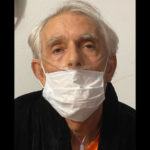Gary Williams had it planned.
When he chose to die, he wanted people to dress in bright clothing. He wanted to sit up on a specific couch. He had his own ritual and “little things” he wanted done.
“He wanted a party,” said Charlotte Charfen, the North Hawaii physician who prescribed the medication that would eventually end his life.
Charfen is one of two Big Island providers who wrote prescriptions for patients under the state’s Our Care, Our Choice Act in 2020.
The aid-in-dying law allows terminally ill patients to seek medication that will end their lives.
Charfen said she always offers to be present for patients who want her there when they take the medications, but Williams’ was the first aid-in-dying death she had attended.
When Charfen arrived at his Keaau home, Williams, who had chronic obstructive pulmonary disease, was sharing with friends who had gathered a column he wrote about difficulties accessing the law that was published in the Tribune-Herald.
According to Charfen, Williams had a primary care physician he had been working with for years, as well as specialty care providers.
Although his doctor had first said they would help, when Williams went to make his second oral request, the doctor said they didn’t participate in the law, instead telling the man he needed to go home and die naturally or “drink a bottle of Benadryl,” she said.
Williams was able to eventually connect with Charfen.
“He wanted his story to be told,” she said. “He asked me to promise him, right before he took his first bottle of medicine … that no other person on this island would have to go through what he went through if it was in my power to help them.”
The powdered prescriptions — two sedatives and two heart-stopping meds — are combined with a liquid, usually apple juice, and ingested in two doses.
The medications were prepared, and Williams was ready.
“My thing is, you can always back out,” Charfen said. “(He) said, ‘No way, give me the damn bottle.’”
Gary took the first dose, “and literally raised his glass to the sky and said, ‘Beam me up, Scotty,’ (then) drank the first bottle with no problem.”
Because it takes a while for the first medication to be absorbed, there’s a 30-minute wait between bottles.
He was there with the doctor, two end-of-life doulas, his daughter and significant other.
When he ingested the second bottle, Williams exchanged I-love-yous.
“He took it, and within 10 minutes, I think he fell asleep.”
Gary died 70 minutes later.
“His death was a beautiful experience,” Charfen said. “His process of getting through the law was challenging.”
“I was worried I was going to feel guilty, ashamed,” Charfen said. “I never did, because I knew Gary so well. I had gone through this whole process with him. Getting to that day, I felt so grateful for him to trust me. He was not a trusting person, but he trusted me and the two doulas to be there, present for his death. He put his life in my hands and … I don’t have words to tell you what that feels like. It’s humbling.”
Debbie Jones of Pahoa, was the first female patient Charfen worked with. She died Jan. 19.
Diagnosed with metastatic breast cancer, Charfen said Jones was the “epitome of holistic medicine.”
She “just beamed sunlight and joy. You meet her, you love her. You instantly love her.”
Pulling up to Jones’ home, Charfen said flower hearts were in the grass. Inside, family and trusted friends gathered. The house was covered in orchids and an altar held important items.
Charfen said hours were spent connecting in the space.
Because she was otherwise healthy, aside from the cancer, Charfen warned there was the possibility of Jones’ death not being average.
Jones blessed and said a prayer over each medicine.
They shared stories of her life. During the wait between doses, Charfen said there was “just so much love being showered on her … the room was full of nothing but love for this woman.”
Jones was unconscious minutes after taking the second bottle, but the process of her death took even longer than the doctor expected, a little more than five hours.
Jones’ daughter crawled into bed with her mother.
The moment was “so tender, so intimate,” Charfen said. “Then I watched, as time went on, … (the daughter) turn into this very strong woman, holding her mom as she’s dying.”
Memories about Jones, written on cards and passed around the circle, were then read to her.
Charfen left shortly before Jones died.
“They called me to tell me, and what I heard in everyone’s voice (was) pure joy,” she said. “They were so joyful. All that fear dissipated.”
Charfen has written six prescriptions in accordance with the law. Three of those patients have used the prescribed drugs.
Three, though, have not. One patient died naturally, one is still thriving, and one was in the process of dying when she spoke to the Tribune-Herald last week.
Charfen’s first medical aid-in-dying patient came to her in June 2019. He felt abandoned by his physicians.
The man, though, has outlived his prognosis.
Charfen said last week that he is now dying and unable to use the medications.
The man was still thriving and loving life, until the terminal process became more aggressive, she said.
“He doesn’t have the competency anymore to take the medicine.”
Even if a patient has already gone through the OCOCA process, Charfen said they’re not legally allowed to use the medications if they’re no longer mentally competent.
“He no longer qualifies,” she said. “He can’t take it. … He’s got to know what he’s doing and I, as his physician, don’t think he can a this point.”
Email Stephanie Salmons at ssalmons@hawaiitribune-herald.com.



